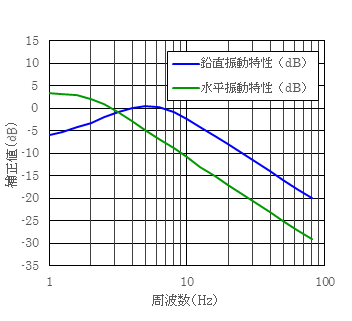vibration
Vibration is a phenomenon in which an object repeatedly changes its position, such as up and down, left and right, etc., over time with respect to a certain reference position. The periodic vibration is the one that repeats the same state at regular intervals, while the irregular vibration is the one whose magnitude and period are unpredictable at any given time.
As a feature of this issue,
- Psychological and sensory effects are the subject of vibrational pollution, and the judgment of such effects is subjective to the person.
- The occurrence of the problem is localized.
etc.
Vibration effects are defined by the government as a form of pollution. There are several types of vibration, such as industrial machinery vibration, construction vibration, road traffic vibration, and railroad vibration, for which standards are set by law.
However, there are various cases where certain machinery and equipment fall under that criterion, or where items that do not fall under that criterion may be considered vibration sources, making this issue more difficult.
Vibration Level
Vibration level is defined as the vibration acceleration level obtained from a physical quantity plus sensory correction, expressed in decibels (dB).
Vibration has different directions, such as vertical and horizontal, and people perceive vibration differently in each direction. In general, vertical vibration tends to be felt more strongly than horizontal vibration.
The graph below shows the body sensory correction characteristics for vertical and horizontal.

Figure Vibration sensory correction value for frequency
Vibration Guideline
| seismic intensity scale | Vibration Level (dB) | sense of people | Indoor conditions |
| 7 | 110 or more | They are at the mercy of the sway and cannot act of their own volition. | Most of the furniture moved significantly, some flying. |
| Seismic intensity 6 upper | 105-110 | Unable to stand and unable to move without crawling. | Much of the heavy furniture that is not secured will move and topple over. The door may come off and fly away. |
| Seismic intensity 6 lower | Difficulty in standing. | Much of the heavy furniture that is not secured will move and topple over. Many doors stop opening. | |
| Seismic intensity 5 upper | 95-105 | Feel very fearful. Many people feel hindered in their behavior. | Many of the dishes on the shelves and books in the bookcase fall out. The TV sometimes falls off its stand. Heavy furniture such as wardrobes may fall over. Deformation may prevent the door from opening. |
| Seismic intensity 5 lower | Many people try to keep themselves safe. Some people feel impeded in their behavior. | Suspended objects shake violently, and dishes on shelves and books in bookcases may fall. Many poorly seated ornaments may fall over and furniture may move. | |
| 4 | 85-95 | Quite fearful, some people try to keep themselves safe. Most people who are asleep wake up. | Suspended objects swayed wildly and dishes on the shelves made noise. A poorly seated ornament may fall over. |
| 3 | 75 to 85 | Most people indoors feel the tremors. Some people feel a sense of dread. | Dishes on the shelves sometimes make noise. |
| 2 | 65 to 75 | Most people indoors feel the tremors. Most people who are asleep wake up. | Suspended objects such as electric lights sway slightly. |
| 1 | 55-65 | Some of the people indoors feel a slight tremor. | Water in cups, etc. shakes slightly. |
| 0 | Below 55 | People do not feel the tremor. |
(The current seismic intensity is determined by the measured seismic intensity.)
*References
New Pollution Prevention Technology and Laws and Regulations 2016 Noise and Vibration Edition Pollution Prevention Technology and Laws and Regulations Editorial Board Edited by Japan Meteorological Agency Seismic Intensity Class (March 2009)
